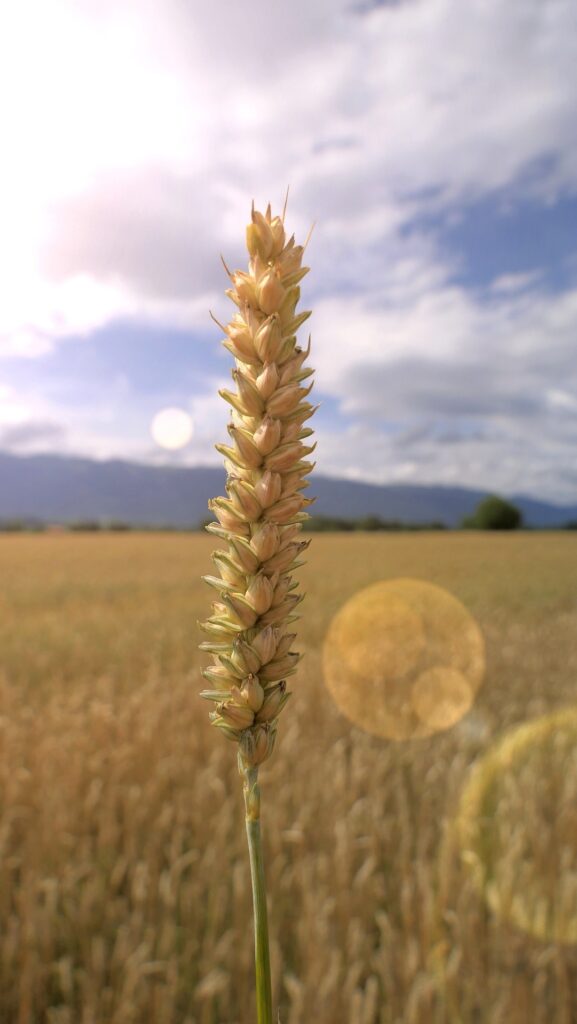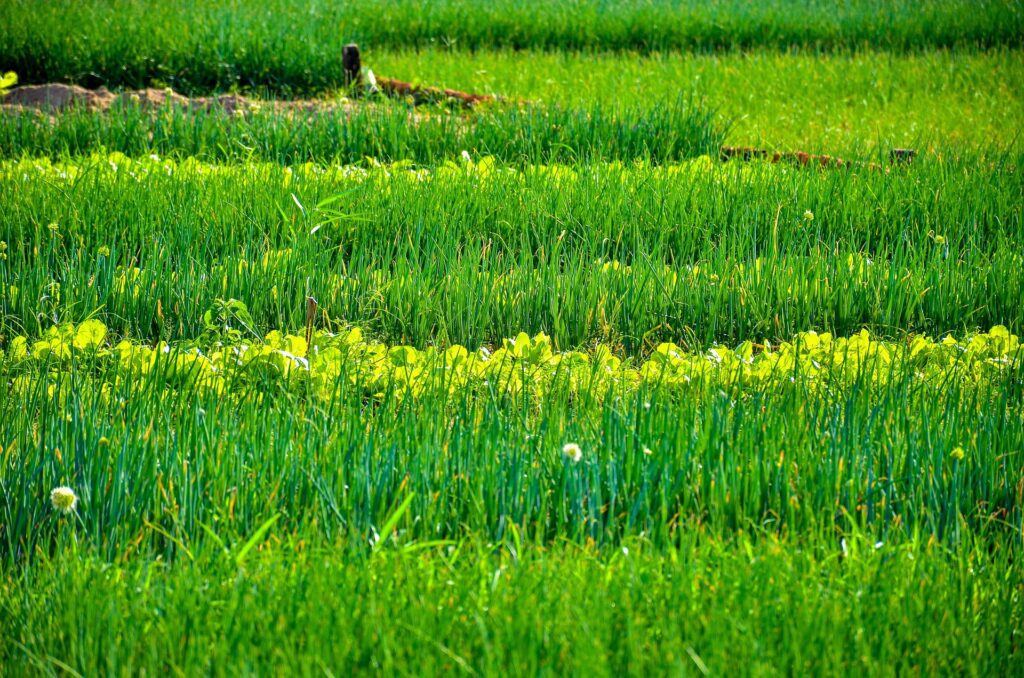Table of Contents
Introduction
Vertical Farming As the global population continues to rise projected to reach nearly 10 billion by 2050—traditional agricultural practices face significant challenges in meeting the increasing demand for fresh produce. Urbanization further complicates this issue, as more people move to cities, reducing available farmland. Enter vertical farming a revolutionary approach that optimizes space and resources by growing crops in vertically stacked layers.
This innovative method not only addresses food security concerns but also opens up a plethora of personal and professional opportunities for individuals interested in agriculture.Vertical farming offers numerous benefits, including efficient land use, consistent crop production, and reduced environmental impact. As urban areas grow and the need for local food sources increases, vertical farming has emerged as a viable solution.
This blog will explore the concept of vertical farming in detail, highlighting its benefits, career opportunities, challenges faced by practitioners, and inspiring success stories from those who have embraced this transformative approach to agriculture.

1: Understanding Vertical Farming
Definition of Vertical Farming
Vertical farming is an agricultural practice that involves growing crops in vertically stacked layers or on inclined surfaces. This method can be implemented in various settings, including warehouses, shipping containers, and dedicated vertical farms. Vertical farming utilizes advanced technologies such as:
- Hydroponics: A method of growing plants in nutrient-rich water without soil.
- Aeroponics: A technique where plants are grown in air or mist environments with minimal water.
- Aquaponics: A system that combines fish farming with plant cultivation, where fish waste provides nutrients for plants.
The primary goal of vertical farming is to maximize crop yield while minimizing land use. By utilizing controlled environments, vertical farms can produce food year-round regardless of external weather conditions.
Historical Context
The concept of vertical farming is not entirely new; it has roots that trace back to ancient civilizations. The Hanging Gardens of Babylon, one of the Seven Wonders of the Ancient World, is often cited as an early example of vertical gardening. However, modern vertical farming began to take shape in the late 20th century when advancements in technology made it feasible to grow crops indoors.
In the early 2000s, pioneers like Dr. Dickson Despommier popularized the idea of vertical farming through academic research and public advocacy. His vision emphasized the potential for urban agriculture to address food insecurity while utilizing less land. Since then, the movement has gained momentum, with numerous startups and established companies investing in vertical farming technologies.
Current Trends in Vertical Farming
Vertical farming has emerged as a key solution to address the challenges of food production in an increasingly urbanized and resource-constrained world. As we look toward the future, several significant trends are shaping the vertical farming landscape. These trends reflect advancements in technology, shifts in consumer preferences, and the growing need for sustainable agricultural practices. Here’s a detailed exploration of the current trends in vertical farming:
1. Rapid Market Growth
The vertical farming market is experiencing exponential growth, projected to expand significantly in the coming years. According to recent reports, the market size is expected to grow from approximately $7.74 billion in 2024 to $9.6 billion in 2025, with a remarkable compound annual growth rate (CAGR) of 24%. By 2035, the market is anticipated to reach around $124.2 billion, showcasing a robust CAGR of 7.65% from 2025 to 2035 12.This growth is driven by several factors, including:
- Increasing Urbanization: With an estimated 80% of the global population projected to live in cities by 2050, urban areas are becoming critical hubs for food production. Vertical farming allows for efficient food production within these urban settings.
- Demand for Local Food: Consumers are increasingly seeking fresh, locally sourced produce, which vertical farms can provide. This demand is further fueled by concerns over food safety and sustainability.


. Technological Advancements
The integration of advanced technologies is revolutionizing vertical farming practices:
- Automation and AI: The use of artificial intelligence (AI) and robotics in vertical farms enhances efficiency and productivity. AI-powered sensors monitor environmental conditions in real-time, allowing for precise adjustments to temperature, humidity, and nutrient delivery systems. This optimizes crop yields while minimizing waste.
- Hydroponics and Aeroponics: These soilless growing techniques are becoming more prevalent as they require less water and space compared to traditional farming methods. Hydroponics can reduce water usage by up to 90%, making it an attractive option for water-scarce regions 13.
- LED Lighting Innovations: Advances in LED lighting technology have improved energy efficiency and crop growth rates. Tailored light spectra can enhance photosynthesis, leading to faster growth cycles and higher yields.
. Expansion into New Crop Varieties
While leafy greens have traditionally dominated vertical farming, there is a noticeable shift toward cultivating higher-margin crops such as:
- Berries: Vertical farms are increasingly growing strawberries and other berries, which can command higher prices due to their popularity among consumers.
- Specialty Herbs: Culinary herbs like basil, mint, and cilantro are being cultivated in vertical systems, catering to gourmet markets and restaurants.
- Mushrooms: The cultivation of mushrooms in vertical farms is gaining traction due to their high nutritional value and demand in various cuisines 5.
This diversification allows vertical farms to tap into new markets and increase profitability.
. Urban Farming Initiatives
As cities expand and land availability becomes scarce, urban vertical farming is gaining traction:
- Local Food Production: Establishing farms within urban centers reduces reliance on imported produce and shortens supply chains. This trend is supported by local governments aiming to enhance food security and promote sustainability within cities 4.
- Community Engagement: Urban vertical farms often engage with local communities through educational programs, workshops, and farm-to-table initiatives that foster awareness about sustainable agriculture.
. Sustainability Focus
Sustainability remains at the forefront of vertical farming trends:
- Resource Efficiency: Vertical farms utilize significantly less land and water compared to traditional agriculture. This efficiency aligns with global efforts to build resilient food systems that can withstand climate change impacts 13.
- Organic Practices: There is a growing preference for pesticide-free produce among consumers. Vertical farming’s controlled environments allow for organic cultivation methods that minimize exposure to harmful chemicals.
- Carbon Footprint Reduction: By locating farms closer to urban centers, transportation emissions associated with long-distance food transport are reduced, contributing to lower overall carbon footprints 2.
. Investment and Collaboration
The vertical farming sector is attracting significant investment from both private investors and public institutions:
- Funding Initiatives: Venture capitalists are increasingly funding startups focused on innovative vertical farming solutions. This influx of capital enables companies to scale operations and invest in research and development.
- Collaborations with Foodservice Industry: Partnerships between vertical farms and restaurants or grocery chains are becoming more common as businesses seek fresh produce sources that align with consumer preferences for sustainability.
2: Benefits of Vertical Farming
Space Efficiency
One of the most significant advantages of vertical farming is its ability to optimize land use. Traditional agriculture requires vast expanses of land for crop production; however, vertical farms can produce the same amount—or even more—of food in a fraction of the space. By stacking layers of crops vertically or utilizing multi-tiered systems, farmers can maximize their yield per square foot.
This space efficiency is particularly beneficial in urban areas where land is scarce and expensive. By converting unused buildings or warehouses into vertical farms, cities can transform underutilized spaces into productive agricultural sites.
Consistent Crop Production
Vertical farming allows for year-round crop production independent of external weather conditions. Traditional farmers often face challenges such as droughts, floods, or seasonal variations that can disrupt planting schedules and reduce yields.
In contrast, vertical farms operate within controlled environments where temperature, humidity, light exposure, and nutrient levels can be precisely managed.This consistency leads to higher crop yields and minimizes losses due to adverse weather events or pests. As a result, consumers benefit from a reliable supply of fresh produce throughout the year.


Environmental Benefits
Vertical farming offers several environmental advantages:
- Reduced Water Usage: Vertical farms use significantly less water than conventional agriculture due to recirculating systems that minimize waste. Hydroponic systems can reduce water usage by up to 90%, making them an environmentally friendly alternative.
- Decreased Pesticide Use: The controlled environments of vertical farms reduce the need for chemical pesticides and herbicides. By mitigating pest infestations through integrated pest management strategies or natural predators, farmers can produce healthier crops without harmful chemicals.
- Lower Carbon Footprint: By locating farms closer to urban centers, transportation emissions associated with transporting food over long distances are reduced. This localized approach contributes to lower greenhouse gas emissions.
Reduced Transportation Costs
Vertical farms situated within urban areas can deliver fresh produce directly to consumers with minimal transportation costs. This proximity not only ensures that food reaches consumers quickly but also reduces spoilage during transit.As consumers increasingly demand fresh and locally sourced food options—especially after experiencing disruptions during global supply chain crises—vertical farming presents a timely solution that meets these needs while supporting local economies.
Economic Opportunities
The rise of vertical farming creates numerous economic opportunities:
- Job Creation: As more vertical farms emerge, they require skilled workers across various roles—from farm managers and engineers to researchers and marketing professionals.
- Higher Profit Margins: Vertical farms often command premium prices for their fresh produce due to its quality and sustainability credentials. Consumers are willing to pay more for locally grown organic vegetables or specialty crops produced using innovative methods.
- Entrepreneurial Ventures: The accessibility of technology has lowered barriers for entry into agriculture. Aspiring entrepreneurs can start small-scale vertical farms using shipping containers or indoor setups without needing large plots of land.
These economic benefits illustrate how vertical farming not only contributes positively to food security but also fosters job creation and entrepreneurial endeavors within communities.
3: Career Opportunities in Vertical Farming
The field of vertical farming offers diverse career paths for individuals interested in agriculture:
Diverse Career Paths
- Farm Manager
- Responsible for overseeing daily operations on a vertical farm.
- Tasks include crop planning, labor management, budgeting, ensuring compliance with regulations.
- Requires strong leadership skills and knowledge of agricultural practices.
- Agricultural Engineer
- Designs systems for efficient crop production within controlled environments.
- Works on optimizing irrigation systems, lighting setups (like LED technology), and climate control mechanisms.
- Requires expertise in engineering principles related to agriculture.
- Crop Scientist
- Focuses on researching plant varieties suitable for vertical farming.
- Conducts experiments on optimizing growth conditions (light intensity, nutrient solutions) for various crops.
- Requires knowledge in plant biology and agronomy.
- Food Safety Specialist
- Ensures that all products meet safety standards throughout production.
- Develops protocols for handling crops from planting through harvesting.
- Requires understanding regulations related to food safety practices.
- Marketing Specialist
- Promotes products produced by vertical farms through various channels.
- Engages with local communities about the benefits of sustainably grown produce.
- Requires strong communication skills along with knowledge about consumer trends.
- Research Scientist
- Conducts research on new technologies or methods that enhance productivity within vertical farms.
- Collaborates with universities or research institutions on agricultural innovations.
- Requires advanced degrees in relevant scientific fields (e.g., horticulture).


Education and Training Requirements
To pursue careers in vertical farming:
- Degrees: Many universities offer programs focused on agricultural sciences or business administration with concentrations related specifically towards agriculture.
- Certifications: Specialized certifications can enhance credentials—for example; obtaining certification from organizations like Certified Crop Adviser (CCA) demonstrates expertise within specific areas!
Investing time into gaining knowledge/experience prepares individuals well for future roles!
Skills Required for Success
To succeed in these roles requires specific skills:
- Technical Skills: Familiarity with hydroponic systems or climate control technologies is essential for many positions within vertical farms.
- Problem-Solving Abilities: The ability to troubleshoot issues related to crop health or system performance is crucial in maintaining productivity.
- Business Acumen: Understanding market dynamics helps professionals make informed decisions about pricing strategies or product offerings based on consumer demand trends.
Developing these skills enhances employability while fostering career advancement opportunities!
4: Challenges in Vertical Farming
While vertical farming presents numerous advantages, it also comes with challenges:
High Initial Investment
Setting up a vertical farm requires significant capital investment:
- Infrastructure Costs: Building out facilities equipped with advanced technologies—such as LED lighting systems or climate control—is expensive upfront.
- Operational Costs: Ongoing expenses related to utilities (electricity/water), labor salaries/benefits must be carefully managed against revenue generated from sales!
Farmers must conduct thorough financial planning before embarking on this venture!
Technical Complexity
Managing a successful vertical farm involves navigating complex technologies:
- System Maintenance: Regular monitoring/maintenance are required ensure optimal performance across hydroponic/aeroponic systems!
- Data Management: Utilizing data analytics tools enables farmers track growth patterns/identify potential issues—but requires familiarity with software applications!
Farmers must invest time into learning these technical aspects effectively!
Market Competition
As interest grows around sustainable agriculture; competition among producers increases:
- Emerging Players: New startups entering market may drive down prices; forcing established farms adapt quickly maintain profitability!
- Consumer Preferences: Shifts toward organic/local products may impact demand traditional crops grown conventionally!
Farmers must stay informed about market trends/consumer preferences navigate this competitive landscape successfully!
Regulatory Issues
Navigating regulations related food safety/environmental practices adds complexity:
- Compliance with local/national laws governing agricultural practices requires ongoing diligence!
- Understanding regulations around organic certification processes may present hurdles aspiring farmers seeking enter this market segment!
Staying informed about changes within regulations allows businesses remain compliant while avoiding potential penalties associated non-compliance!
5: Success Stories in Vertical Farming
Highlighting individuals who have made significant contributions within this field serves as inspiration for aspiring professionals! For example:


Case Studies of Successful Vertical Farmers
Vertical farming has gained significant traction as a sustainable solution to food production, especially in urban areas where space is limited. This innovative approach has led to the emergence of various successful vertical farming enterprises around the world. Below are detailed case studies of notable vertical farming companies that exemplify the potential and effectiveness of this agricultural method.
. AeroFarms
Overview: Founded in 2004 and based in Newark, New Jersey, AeroFarms is a pioneer in the vertical farming industry. The company utilizes advanced aeroponic systems to grow a wide variety of leafy greens without soil, using up to 95% less water than traditional farming methods.Key Innovations:
- Aeroponic Technology: AeroFarms employs a patented aeroponic growing system that delivers nutrients directly to the plant roots through a mist, allowing for faster growth and higher yields.
- LED Lighting: The use of energy-efficient LED lighting tailored to the specific needs of plants enhances photosynthesis and growth rates.
Achievements:
- AeroFarms has achieved impressive crop yields, producing over 2 million pounds of greens annually.
- The company has formed partnerships with major retailers and foodservice companies, expanding its market reach.
- AeroFarms has received substantial investment, totaling over $100 million, to scale its operations and advance its technology.
. Plenty
Overview: Plenty is a California-based vertical farming company known for its innovative use of technology in agriculture. Founded in 2014, Plenty focuses on growing a variety of crops using vertical hydroponic systems.Key Innovations:
- Vertical Hydroponic Systems: Plenty’s farms utilize stacked layers to maximize space while employing advanced robotics for planting, harvesting, and monitoring crops.
- Data-Driven Farming: The company employs machine learning and AI to optimize growing conditions and improve crop quality.
Achievements:
- Plenty has raised over $400 million in funding from investors such as SoftBank Vision Fund, enabling rapid expansion.
- The company’s farms are designed to produce significantly higher yields with lower resource consumption compared to traditional agriculture.
- Plenty has established partnerships with major grocery chains to supply fresh produce directly to consumers.
. Gotham Greens
Overview: Gotham Greens operates commercial-scale greenhouses in urban areas across the United States. Founded in 2011, the company focuses on providing locally grown, pesticide-free produce.Key Innovations:
- Greenhouse Technology: Gotham Greens uses hydroponic systems within greenhouses that harness natural sunlight while also utilizing energy-efficient technologies.
- Urban Integration: The company strategically locates its farms in urban centers, reducing transportation costs and ensuring fresher produce for local markets.
Achievements:
- Gotham Greens has expanded its operations to multiple cities, including New York City, Chicago, and Baltimore.
- The company partners with grocery store chains and restaurants to deliver fresh produce directly from its urban farms.
- Gotham Greens produces over 1 million pounds of greens annually, contributing significantly to local food systems.
. Sky Greens
Overview: Located in Singapore, Sky Greens is known for its innovative vertical farming system that utilizes rotating towers. Founded in 2012, the company aims to enhance food security in densely populated urban areas.Key Innovations:
- Rotating Vertical Systems: Sky Greens employs a unique rotating system that allows crops to receive uniform light exposure while maximizing space efficiency.
- Sustainable Practices: The farm uses rainwater harvesting and solar panels to minimize environmental impact.
Achievements:
- Sky Greens produces a variety of vegetables, including lettuce and bok choy, supplying local markets with fresh produce.
- The company’s innovative approach has garnered attention as a model for sustainable urban agriculture in land-scarce regions like Singapore.
. Vertical Harvest
Overview: Vertical Harvest operates hydroponic farms that focus on creating job opportunities for individuals with disabilities. Located in Jackson Hole, Wyoming, this social enterprise combines community engagement with sustainable agriculture.Key Innovations:
- Inclusive Employment Model: Vertical Harvest employs individuals with disabilities to work on its farm, providing meaningful job opportunities while producing fresh food year-round.
- Hydroponic Systems: The farm utilizes hydroponics to grow a variety of crops efficiently within a limited footprint.
Achievements:
- Vertical Harvest produces over 100,000 pounds of fresh produce annually, supplying local restaurants and grocery stores.
- The company has received recognition for its commitment to social responsibility and sustainability within the community.
Lessons Learned from Their Journeys
Key takeaways from these journeys include:
- Embracing failure as part learning process encourages resilience!
- Fostering community engagement builds strong support networks essential navigating challenges successfully!
Conclusion
Engaging in vertical farming represents a dynamic opportunity offering immense potential for personal fulfillment alongside professional success! From enhancing global food security addressing environmental concerns
this field encompasses numerous opportunities waiting exploration!By actively participating within this industry individuals cultivate thriving careers rooted deeply within sustainable practices benefiting both themselves society at large!If you’re considering embarking your journey into vertical farming—now is excellent time!
Explore local resources available near you—whether workshops hosted experienced growers nearby online courses designed specifically around sustainable agricultural practices! This blog post provides an extensive overview of how engaging with vertical farming contributes significantly toward both personal fulfillment as well as professional success! Each section elaborates on various aspects related directly back toward understanding why this movement matters today more than ever before!